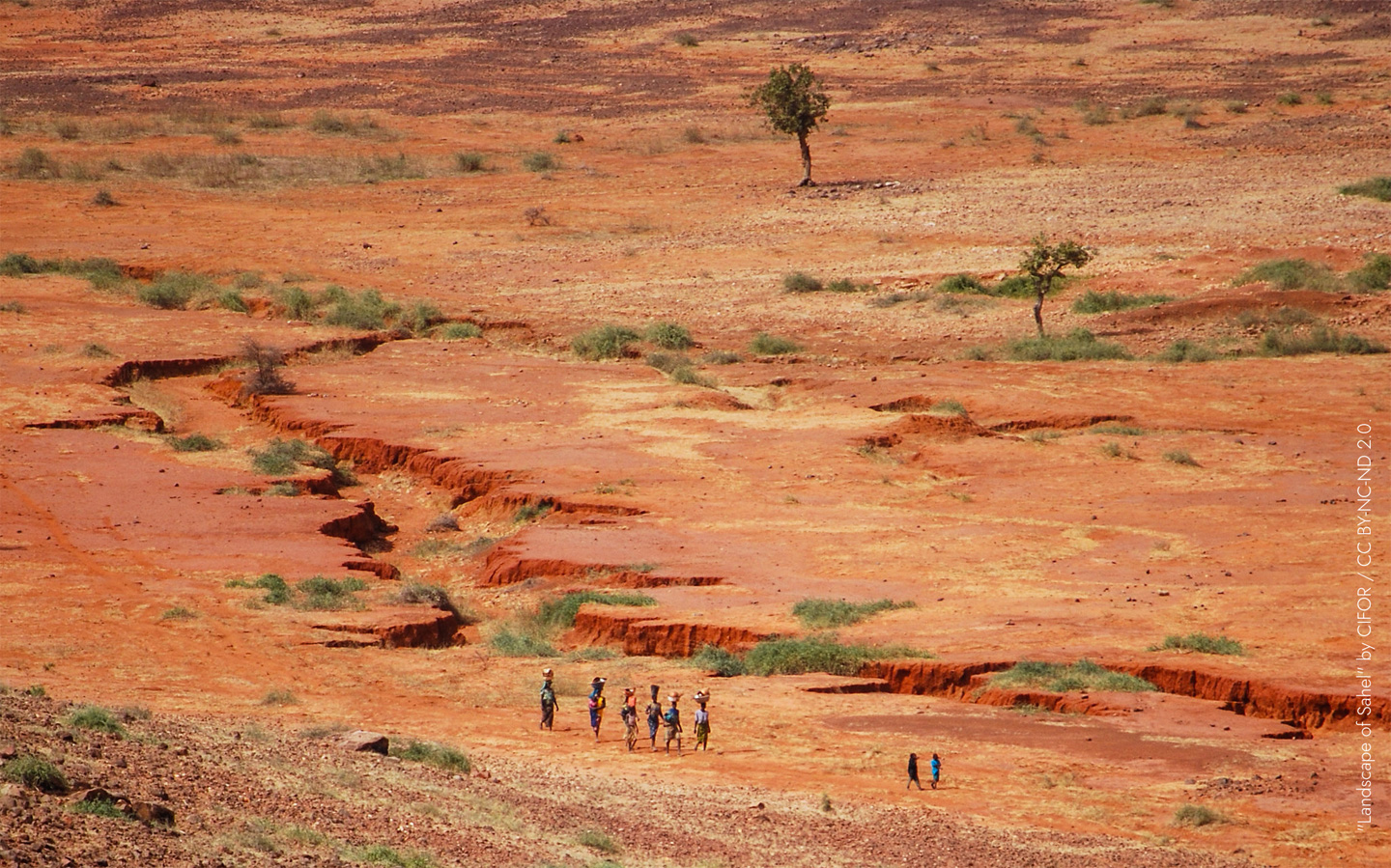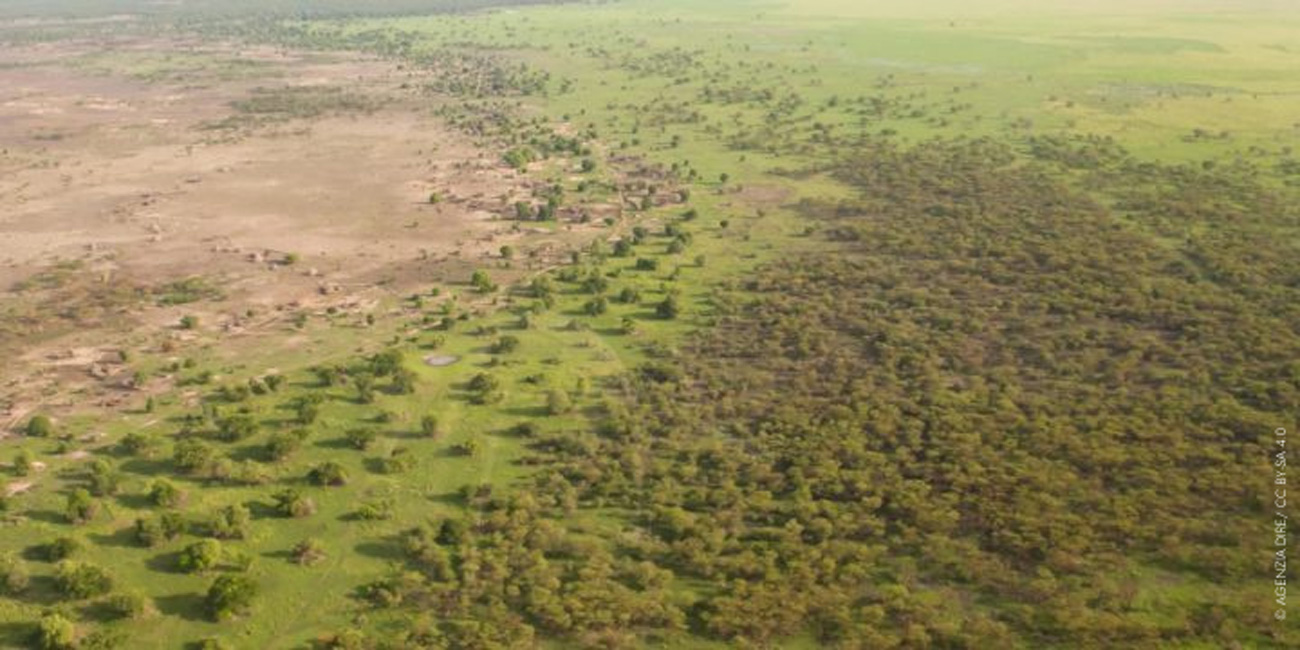The thin green line that’s holding back the Sahara desert
IFAD Asset Request Portlet
Asset Publisher
The thin green line that’s holding back the Sahara desert
Estimated reading time: 4 minutes
Fifteen years ago, Africa’s leaders had a vision that would change the future of their continent.
They imagined a thin but powerful green line strung between the Indian Ocean and the Atlantic: a strip of trees 8,000 km long and 15 km wide. It would trace the Sahel, the dryland region sandwiched between the Sahara desert to the north and the savannah to the south.
Today, this vision has been refined. The Great Green Wall (GGW) is now envisioned not as a simple row of trees, but as a complex mosaic of farms, forests and wilderness, where ecosystems are restored and water is conserved; where rural areas are vibrant economic hubs, producing ample food and offering meaningful livelihoods.
IFAD is among the guardians of this vision.
Land degradation in the Sahel
Land becomes degraded when human activity diminishes its health through climate change, population growth or unsustainable land and water management. Crops become harder to grow, biodiversity declines, and disasters become more likely.
In dryland areas like the Sahel, land degradation can upset their delicate balance and make them barren.
The Sahel had experienced its share of dry years, of course. But in the mid-twentieth century, people started noticing that drought was happening more often and with greater force. Between 1968 and 1974, catastrophic droughts triggered large-scale famine, prompting world leaders to act. In fact, the UN conference called in response to this crisis led to the establishment of IFAD.
Meanwhile, the tide of desertification kept creeping southwards, turning green fields barren. Between 1984 and 1985, another drought contributed to a terrible famine, causing hundreds of thousands of deaths. Experts pointed out that human actions were the underlying cause of desertification – and only human action could stem its tide.
 |
| The Great Green Wall Initiative is dedicated to restoring degraded land and holding back encroaching desertification. |
The Great Green Wall takes shape
Over the following years, as the impacts of climate change and environmental degradation due to human activity became ever clearer, momentum grew. At last, in 2007, 11 Sahelian states signed up to the Great Green Wall Initiative (GGWI) in an effort to restore degraded land and hold back encroaching desertification.
The GGWI is unique. It’s led and owned by African countries, and it takes an integrated approach to development and land restoration. It aims to protect the environment and enable countries and communities to develop sustainably.
Its overarching goals are simple: restore 100 million hectares of degraded land, sequester 250 million tons of carbon, and create 10 million green jobs in rural areas by 2030.
To these ends, the countries in the initiative have introduced sustainable land management practices in forestry and agriculture (reforestation, land restoration, agroforestry); water (improved irrigation, watershed management, boreholes); and soil (terracing and dune-fixing to prevent erosion; wind and fire breaks).
By 2019, about 4 million hectares were reported as restored under the GGWI, and another 17.8 million hectares had been restored outside the intervention zones.
Satellite images confirmed that in many areas, the tide of desertification was being held back or even reversed. But it wasn’t happening fast enough. Estimates revealed that the pace of restoration will have to increase as much as four-fold to hit the 2030 target.
But many countries don’t yet have the environmental governance structures or institutional and coordination capacity to achieve this ambitious, inter-sectoral undertaking. Moreover, it’s hard to keep track of activities, and ensure their sustainability, when the benefits become apparent only after many years.
Funding is another huge challenge. A total of US$1.8 billion was allocated to the GGW between 2010 and 2019. But meeting land restoration targets will require a further investment of US$3.6–4.3 billion by 2030.
African leaders, and their counterparts worldwide, agree: it’s time to create new momentum.
IFAD and the Great Green Wall
In 2021, IFAD announced it would launch an umbrella programme in partnership with the Green Climate Fund; UNCCD, which hosts the secretariat of the GGW Accelerator along with the GGW Agency; and all the historical partners and countries of the GGWI. This will help countries implement the transformational approaches needed to restore land, soil and agricultural production while building access to markets and improving nutrition.
Initiatives under this programme are now beginning. IGREENFIN, for example, brings in US$216 million to support access to credit for green agricultural investments. And the Africa Integrated Climate Risk Management Programme is investing US$143 million to restore degraded land, establish climate information systems, and create access to agricultural insurance in seven countries.
Although IFAD is a relatively new partner in the GGWI, we’ve been working on sustainable land management in the Sahel for years. As of late 2021, our investment portfolio in GGW countries amounted to US$2.8 billion. IFAD also leads the GEF-funded Resilient Food Systems programme, which has restored nearly half a million hectares of degraded land in 12 Sub-Saharan countries since 2017.
If we’re successful in building this thin green line, the benefits will be felt across the Sahel and the world. The GGW will restore unique ecosystems, capture carbon and avert threats to the livelihoods and food security of over 135 million people. This may also help reduce tensions over scarce resources – an important consideration given that the Sahel is prone to conflict. And it’ll create decent livelihoods at home for people who might otherwise see no option but to migrate.
Publication date: 11 May 2022